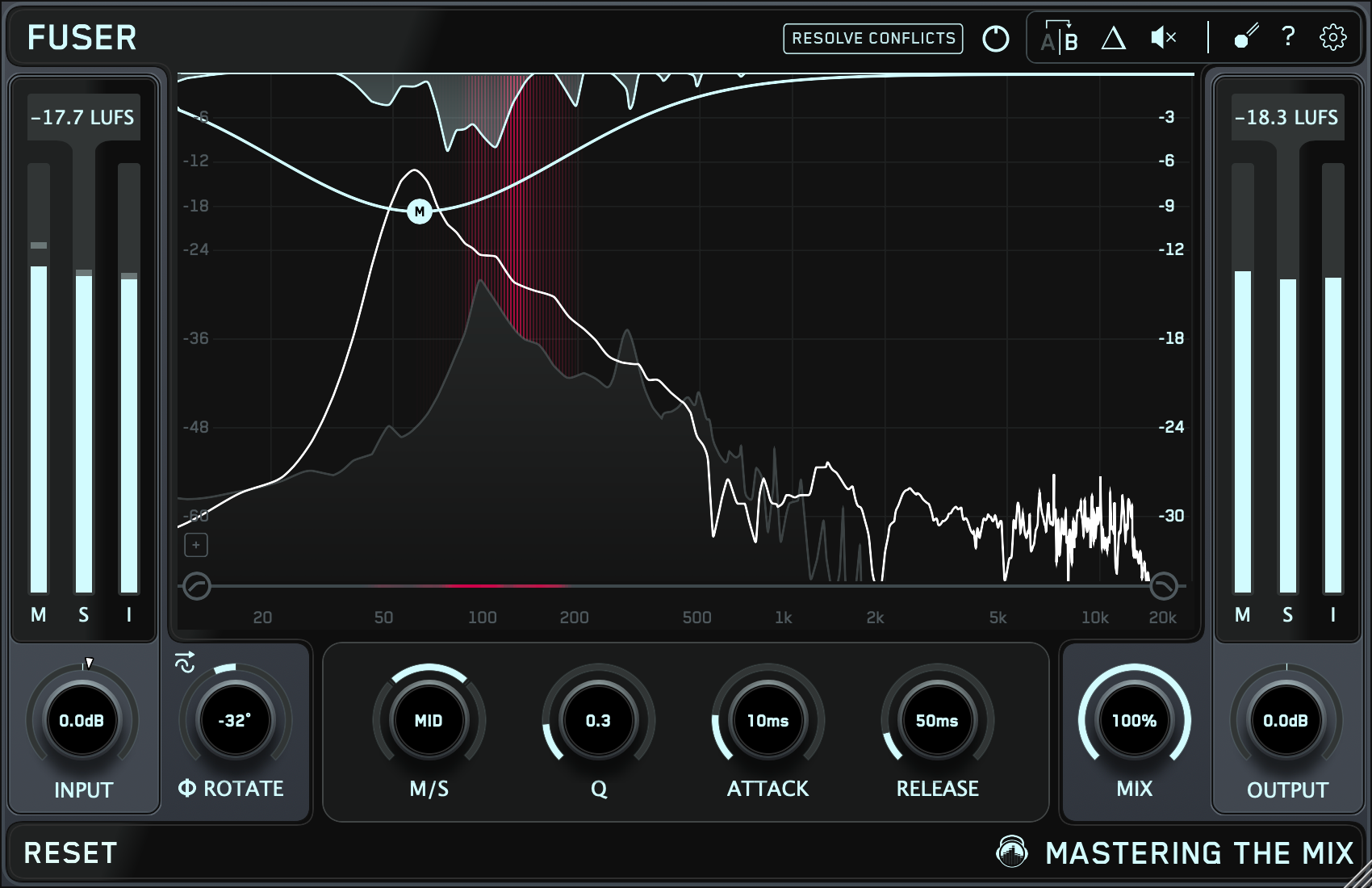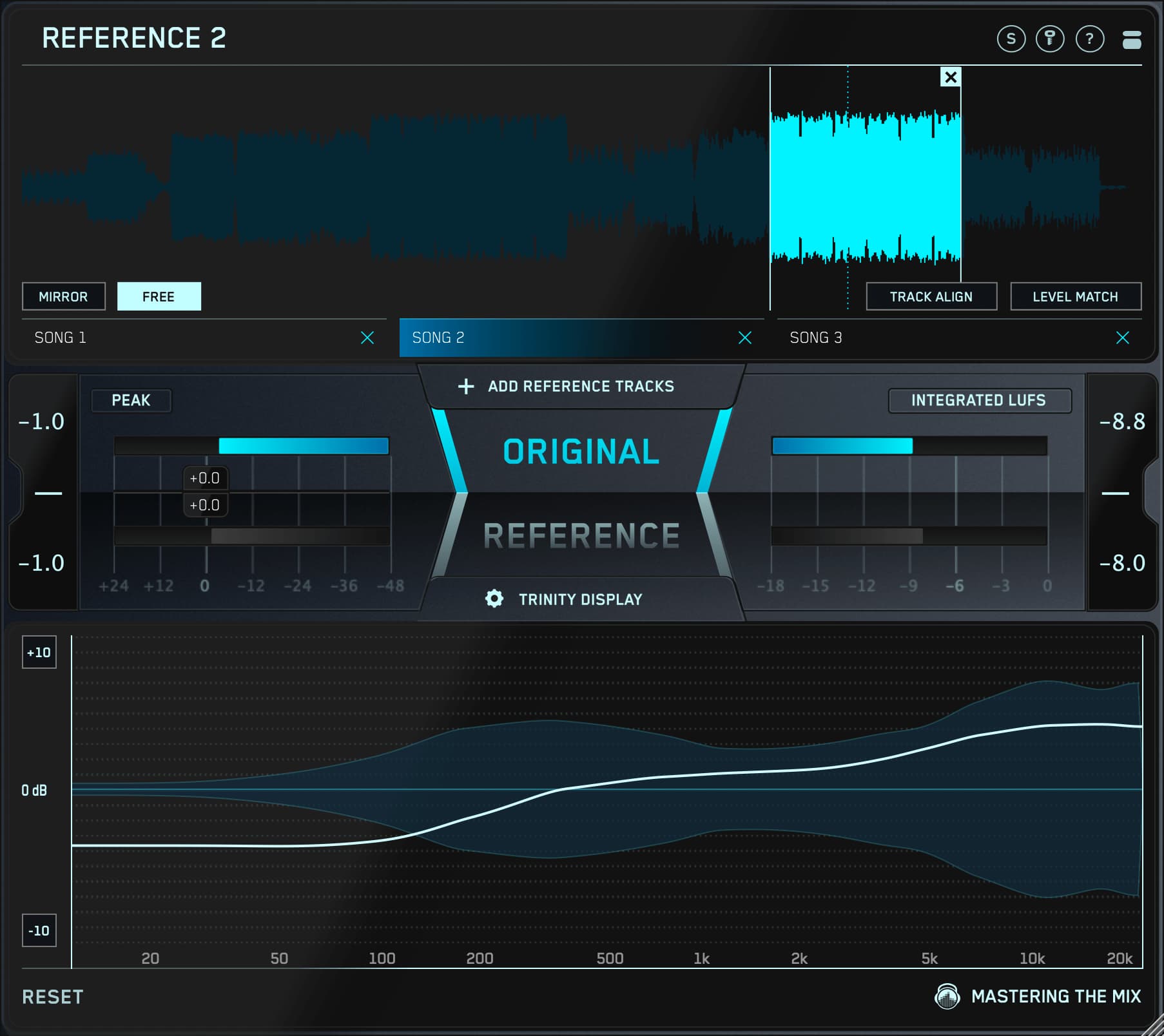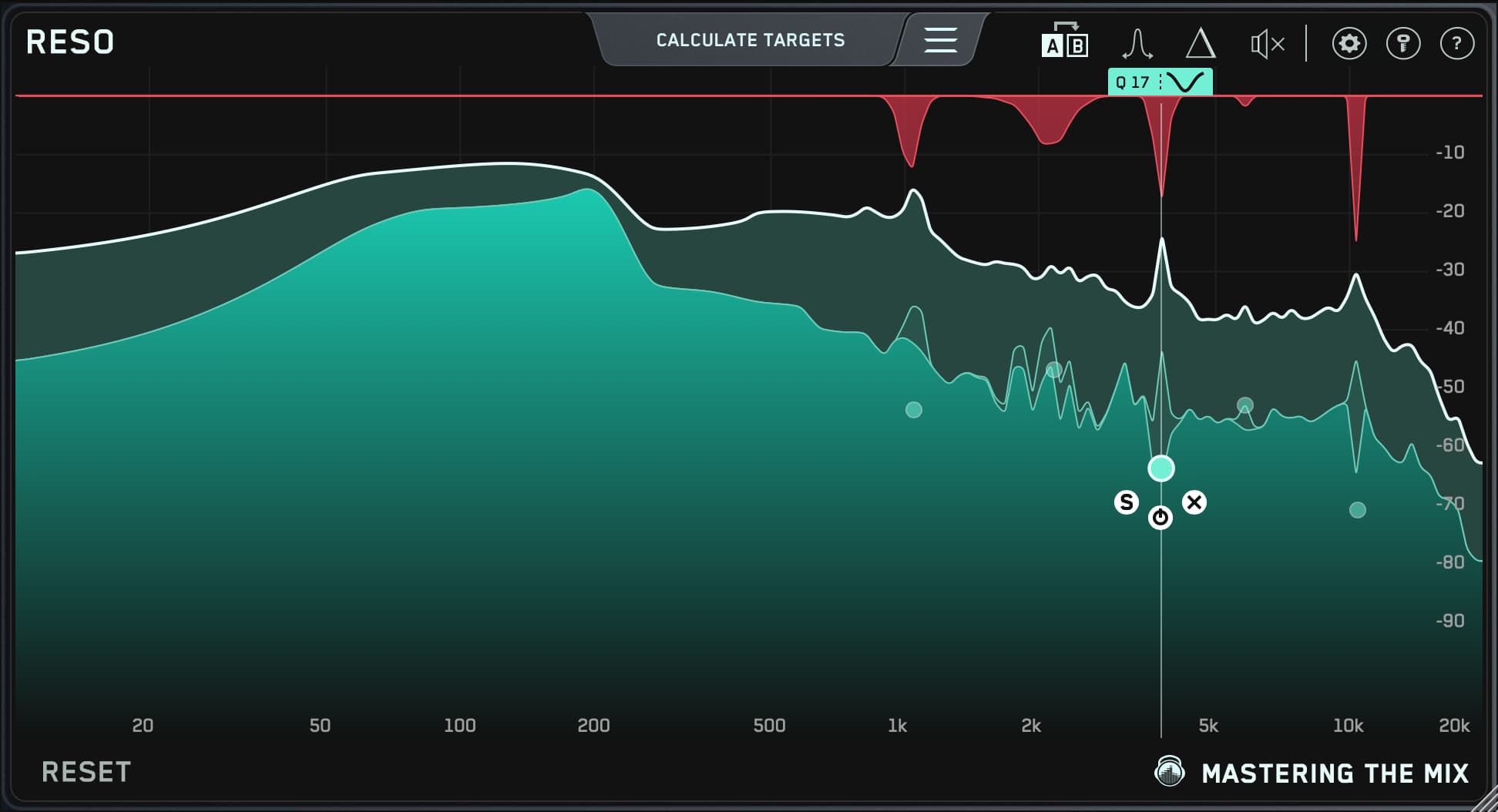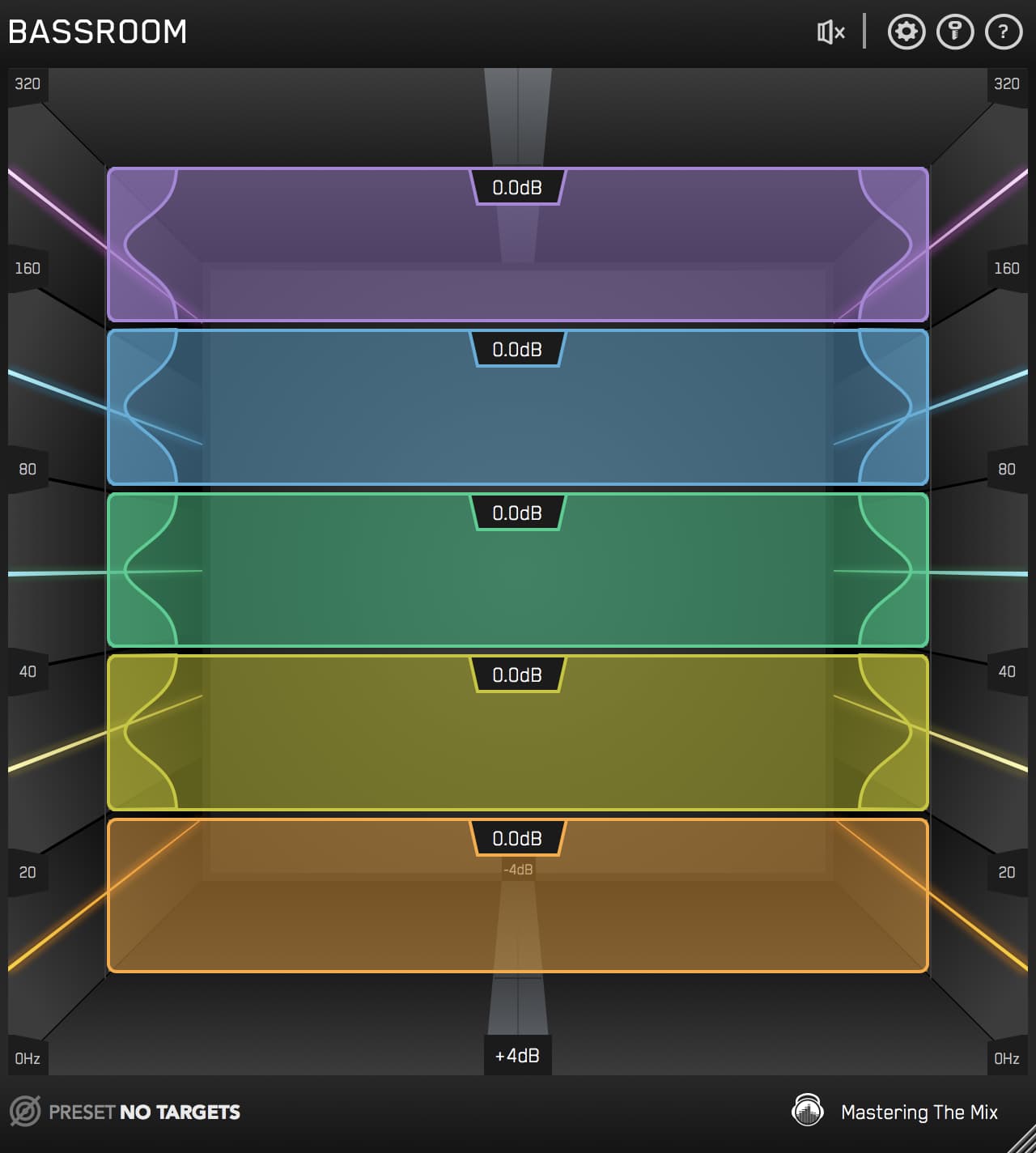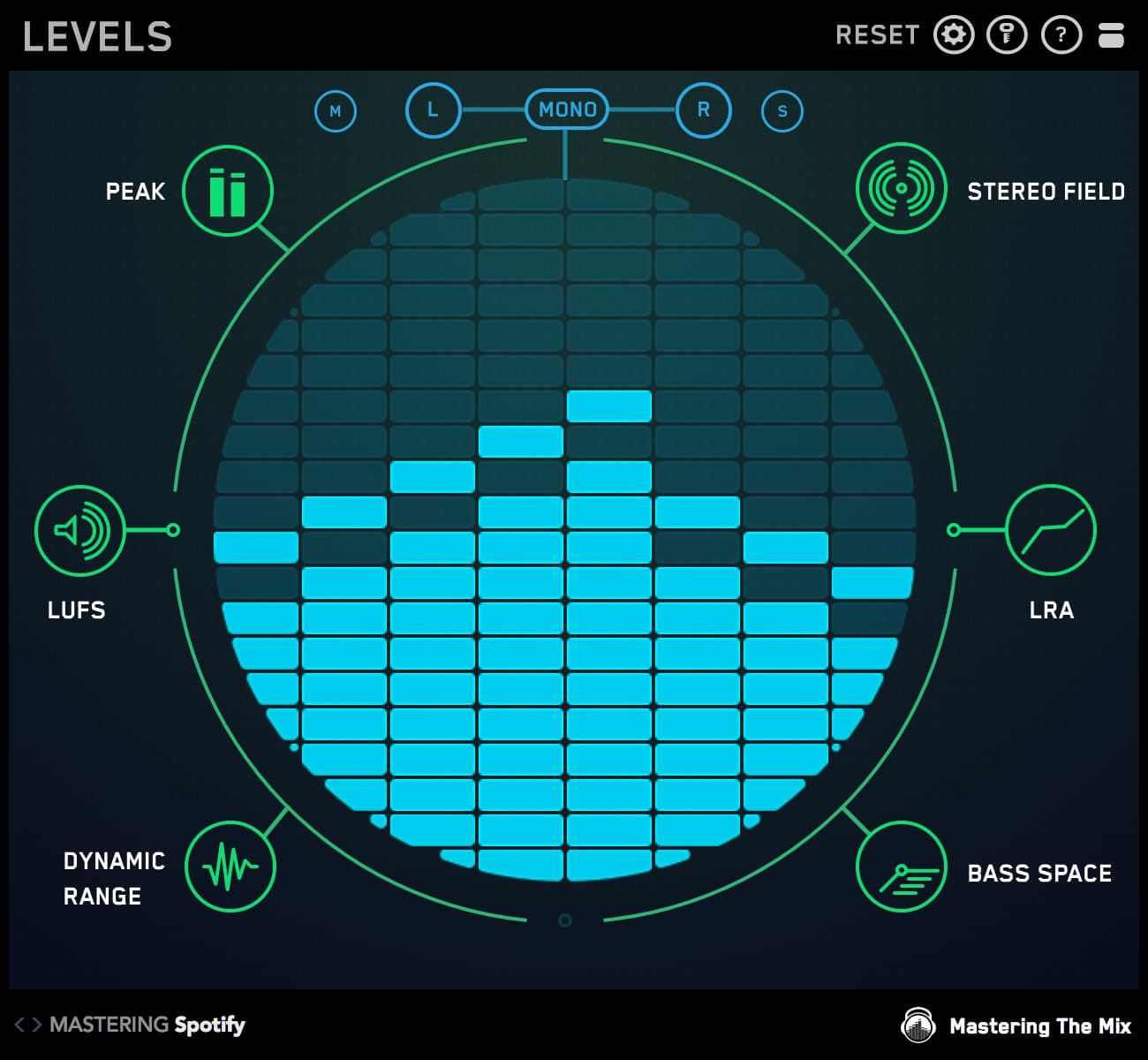If your mix sounds muddy, cluttered, or just “off,” clarity is likely the missing ingredient.
It’s what separates amateur-sounding productions from pro-level tracks. The good news? You don’t need new gear or years of experience to fix it—you just need the right techniques.
In this post, you’ll discover 10 actionable mixing tricks that will instantly sharpen your sound. From optimizing your monitoring levels to using advanced tools like REFERENCE, FUSER, BASSROOM, and MIXROOM, you’ll learn how to clean up your mix, create space between elements, and get that polished, professional sound.
Let’s break through the fog and dial in the clarity your tracks deserve.

1. Monitor At The Right Volume
You might be surprised how much your monitoring level affects the clarity of your mix. If you're listening too loud, your ears become more sensitive to high frequencies, making your mix feel overly bright. The natural instinct? Dial it down—resulting in a dull, lifeless final product. On the flip side, monitoring too quietly can make your mix feel weak or dark, pushing you to overcompensate with unnecessary brightness.
The sweet spot? Aim to monitor around 73–76 dB SPL. This is the range where your ears hear most accurately across the frequency spectrum. You’ll make better, more balanced decisions—especially when EQing vocals, cymbals, or high-frequency elements that define clarity.
A quick tip: Use a simple SPL meter app on your phone or a dedicated meter to calibrate your monitoring level. And don’t forget to occasionally check your mix at both low and high volumes. It’s a fast way to catch clarity issues that only show up under different listening conditions.
Nail your monitoring level, and you’ll unlock clearer, more reliable mix decisions from the very start.

2. Use REFERENCE To Stay Grounded
It’s easy to lose perspective when you’ve been deep in a mix for hours. What sounded clear in the moment might actually be masking or muddy when compared to commercial tracks. That’s where REFERENCE comes in—your sonic compass for achieving professional clarity.
REFERENCE lets you A/B your mix against your favourite tracks with precision. Use the Trinity Display to visually compare frequency balance, stereo width, and punch. Feeling like your mix is too dull? Is it brighter than your reference? REFERENCE shows you exactly where you're falling short—and where you might be overcompensating.
You can even isolate specific frequency bands to zone in on clarity hotspots—like vocals, snares, or hi-hats. And the level matching ensures you're making honest comparisons, not getting tricked by loudness.
When you regularly check your clarity against pro mixes using REFERENCE, you build trust in your ears and develop faster, better instincts. It’s like mixing with a mentor in the room.

3. Clear The Clash With FUSER's Phase Optimization
Sometimes your mix sounds muddy or hollow—not because your EQ is off, but because the phase relationships between elements are clashing. This is especially true in the low-end, where kick, bass, and synths often fight for space. Enter FUSER, your go-to tool for surgical clarity through phase alignment.
FUSER’s Phase Optimization feature analyzes the relationship between two tracks and automatically adjusts their phase to reduce destructive interference. In plain terms? It locks them into sync so they sound tighter, punchier, and way clearer—without EQing a single thing.
You’ll instantly hear more definition in the lows and more separation in the mids. That subtle “fog” that’s been hanging over your mix? Gone. It’s one of the fastest, most transparent ways to boost clarity without compromising tone or character.
Try it on kick and bass, guitars and synths, or even layered percussion. With one click, your mix breathes easier and sounds more polished.

4. Use FUSER’s ‘Resolve Conflicts’ To Clean Up Masking
When two instruments are fighting for the same frequency space, your mix gets muddy fast. But instead of endlessly tweaking EQs, let FUSER do the heavy lifting with its ‘Resolve Conflicts’ feature.

This intelligent function uses dynamic spectral ducking to automatically reduce masking between tracks—only when and where it’s needed. So your vocal might subtly duck a synth pad in the exact moment their frequencies overlap, but stay untouched the rest of the time.
The result? Your key elements stay upfront and intelligible, while supporting layers remain full and present. Unlike traditional sidechaining, this is detailed, transparent, and musical. You don’t lose character or vibe—just gain clarity where it counts.
Apply it to vocals vs. guitars, lead synths vs. pads, or drums vs. bass. It’s one of the smartest ways to create space without compromising punch or energy.

5. Clean Up The Low-End With BASSROOM
If your mix feels muddy or your highs seem lifeless, don’t just reach for a top-end boost—fix the low-end first. Often, an unbalanced or bloated bass range is what’s dragging your mix down. That’s where BASSROOM comes in.
BASSROOM is a smart EQ designed specifically for shaping low frequencies with precision and clarity. It uses genre-specific target curves to guide you towards a tight, well-balanced low-end—no guesswork needed.
Dial in your kick, bass, and low synths using BASSROOM’s intuitive interface, and you’ll notice something magical: as the lows tighten, the highs seem to sparkle more. That’s because cleaning up low-end mud frees up headroom and reduces masking across the spectrum.
For best results, compare your mix against a professionally mastered reference inside BASSROOM. Aligning your low-end with a proven standard lays the foundation for a clean, powerful mix from the ground up.

6. Sharpen The High-End With MIXROOM
High-end clarity can make or break your mix. Too much, and things get harsh and brittle. Too little, and your track feels dull or buried. MIXROOM helps you strike the perfect balance by giving you precise control over your mid and high frequencies—especially in the stereo field.
Using MIXROOM’s mid/side EQ, you can shape the sparkle and air in your mix without overhyping it. Want vocals to feel more present without crowding the sides? Boost the mids. Want cymbals and spatial effects to shimmer without clashing with the center? Add a gentle high-end boost on the sides.
Even subtle tweaks make a huge difference. MIXROOM’s target curves guide you toward pro-level tonal balance, helping you make smarter decisions, faster. It’s clarity, without the guesswork.
Whether you're brightening up vocals, cleaning up guitars, or widening synths, MIXROOM makes the high-end work for you—not against you.

7. Tame Reverb Tails Without Killing Space
Reverb adds depth and vibe—but too much of it and your mix can quickly lose definition. Those long, washy tails can blur the lines between instruments, smothering clarity and making everything feel distant. The trick? Don’t remove reverb—control it.
Start by placing an EQ after your reverb plugin. Roll off the lows below 200Hz to prevent low-end buildup, and gently cut the 2–5kHz range if it starts to sound harsh or cluttered. This keeps the reverb lush without overpowering the dry signal.
Want to take it further? Use a sidechain compressor or dynamic EQ to duck the reverb only when the dry signal plays. That way, you keep the reverb alive in the gaps, while your vocals or leads remain front and center when it matters most.
It’s all about finding that sweet spot where space and clarity live in harmony. When you tame your reverb just right, your mix instantly feels more polished, focused, and professional.

8. EQ With Intent: Cut Before You Boost
When your mix feels crowded or unclear, it’s tempting to reach for the EQ and start boosting. But more often than not, the real clarity comes from knowing what to remove, not what to add.
Start with subtractive EQ. Focus on frequencies that commonly cause mud and clutter—like 200–500Hz for low-mid buildup, or 1–2kHz for nasal or honky tones. By gently cutting these problem areas, you make room for the rest of your mix to breathe.
This approach helps elements sit together more naturally, reduces masking, and creates space without needing to crank up the highs. It’s surgical, controlled, and often more effective than chasing brightness with endless boosts.
Before adding any top-end sparkle, ask yourself: “Have I cleared the mud first?” A cleaner foundation always leads to a clearer result.

9. Don’t Over-Compress—It Kills Separation
Compression is essential for shaping dynamics, but overdo it and you’ll squash the life out of your mix. When everything is loud all the time, transients disappear, and your track turns into a flat, congested wall of sound.
To maintain clarity, use slower attack times to let transients breathe. This keeps the initial punch of drums, vocals, and other key elements intact—preserving separation and presence in the mix.
Also, don’t be afraid to use parallel compression. It lets you blend in energy and density without sacrificing detail. Your dry signal stays clean and dynamic, while the compressed version adds weight underneath.
The goal isn’t to tame every peak—it’s to enhance the natural dynamics in a way that supports clarity and punch. When in doubt, ease off the threshold and trust your ears. A more open mix often sounds more professional.

10. Automate Levels For Space And Separation
One of the biggest clarity killers? Static levels. If every element in your mix holds the same volume from start to finish, they’re bound to clash and compete—especially during busy sections. The fix? Automation.
Use volume automation to create space in real time. For example, duck a synth or guitar slightly when the vocal comes in, then bring it back up during instrumental breaks. This keeps the spotlight on your lead elements without muting supporting sounds entirely.
Automation is also great for carving clarity in layered arrangements—like backing vocals, percussion, or ambient textures. Even subtle moves of 1–2 dB can drastically improve separation and focus.
Think of it as a conversation—elements should take turns speaking, not talk over each other. When your mix breathes dynamically, clarity naturally follows.

Conclusion: Clarity Is Within Reach
Clarity isn’t some elusive magic reserved for the pros—it’s the result of smart, intentional moves like the ones you’ve just learned. Whether it’s dialing in your monitoring volume, comparing with references, tightening phase relationships, or cleaning up reverb tails, each of these tricks brings your mix one step closer to sounding polished and professional.
The best part? You don’t need to overhaul your workflow. Just start small—apply one or two tips on your next mix and build from there. The difference will be immediate, and your confidence will grow with every clear, balanced track you produce.
Ready to hear the clarity for yourself? Download a free trial of our plugins and discover how tools like REFERENCE, FUSER, BASSROOM, and MIXROOM can transform your mixes with precision and ease.
And if you found these tips helpful, don’t forget to sign up for our newsletter to get more mixing strategies, tutorials, and exclusive offers delivered straight to your inbox.
Your best mix yet is just a few smart moves away—go make it happen.


